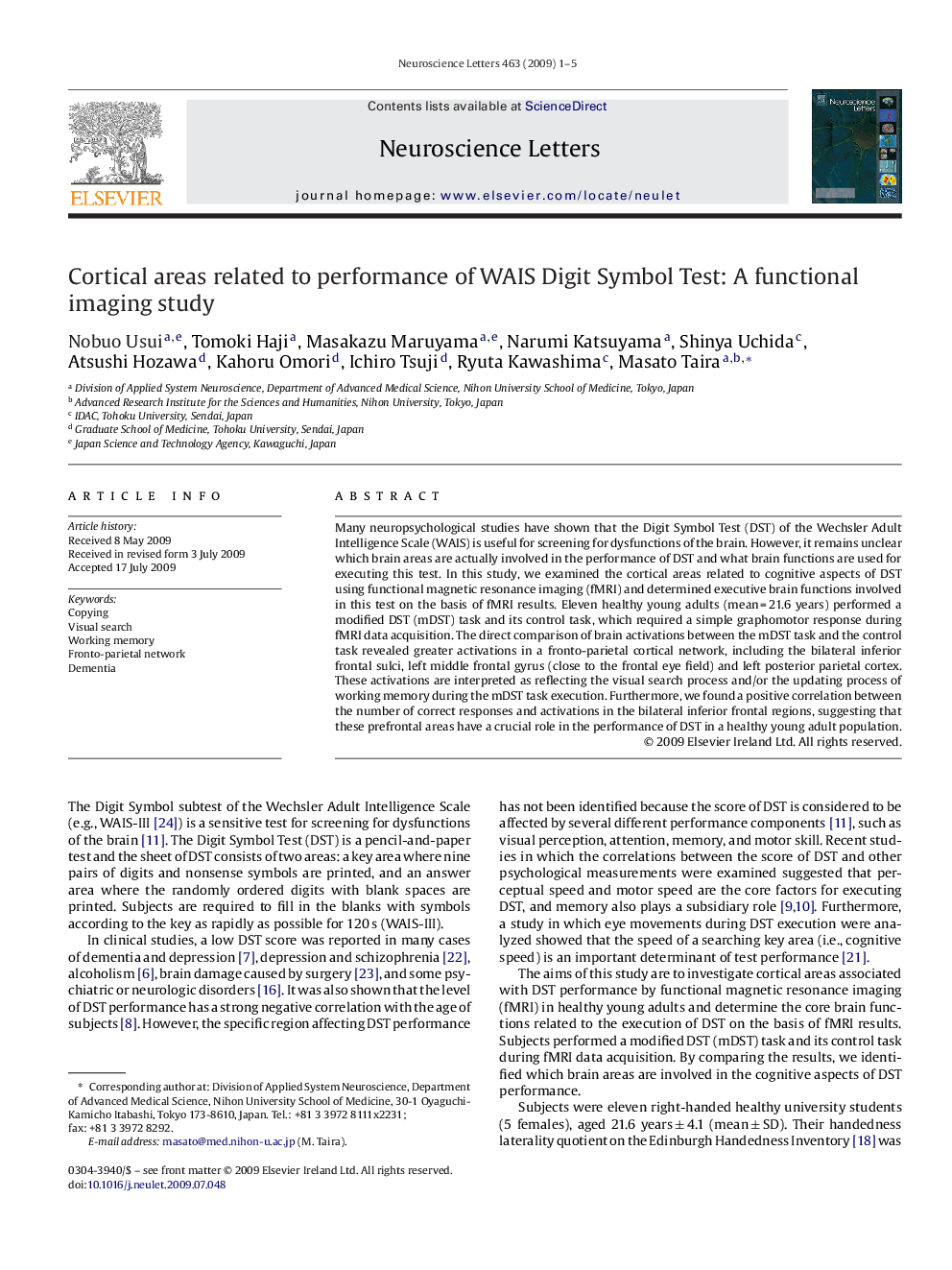| Article ID | Journal | Published Year | Pages | File Type |
|---|---|---|---|---|
| 6285428 | Neuroscience Letters | 2009 | 5 Pages |
Abstract
Many neuropsychological studies have shown that the Digit Symbol Test (DST) of the Wechsler Adult Intelligence Scale (WAIS) is useful for screening for dysfunctions of the brain. However, it remains unclear which brain areas are actually involved in the performance of DST and what brain functions are used for executing this test. In this study, we examined the cortical areas related to cognitive aspects of DST using functional magnetic resonance imaging (fMRI) and determined executive brain functions involved in this test on the basis of fMRI results. Eleven healthy young adults (mean = 21.6 years) performed a modified DST (mDST) task and its control task, which required a simple graphomotor response during fMRI data acquisition. The direct comparison of brain activations between the mDST task and the control task revealed greater activations in a fronto-parietal cortical network, including the bilateral inferior frontal sulci, left middle frontal gyrus (close to the frontal eye field) and left posterior parietal cortex. These activations are interpreted as reflecting the visual search process and/or the updating process of working memory during the mDST task execution. Furthermore, we found a positive correlation between the number of correct responses and activations in the bilateral inferior frontal regions, suggesting that these prefrontal areas have a crucial role in the performance of DST in a healthy young adult population.
Related Topics
Life Sciences
Neuroscience
Neuroscience (General)
Authors
Nobuo Usui, Tomoki Haji, Masakazu Maruyama, Narumi Katsuyama, Shinya Uchida, Atsushi Hozawa, Kahoru Omori, Ichiro Tsuji, Ryuta Kawashima, Masato Taira,
